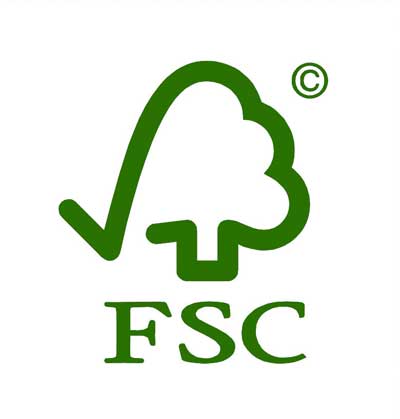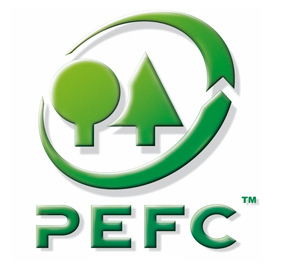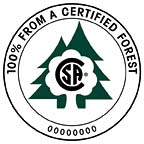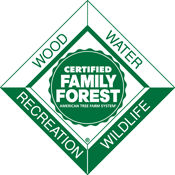What Is Sustainable Forestry?
Video
Reducing paper usage has been one of the most iconic and understandable of the green movement’s mandates. The intricacies of forest management have remained obscure to most of us, however, although forest management is the real key to preserving woodland habitats as well as our wood supply. Most consumers now recognize that it is an eco-friendly choice to look for the Forest Stewardship Council (FSC) label on wood products, to guarantee that they are sustainably produced … but what does this label mean, exactly, and is there more to the story of sustainable forestry?
To perform optimally, the world’s forests must be able to maintain their ecological functions while still providing for the economic and cultural needs of humans. As we strive to achieve this tricky balance, various, and often competing, forest management programs have been created. Some maintain very high environmental standards but struggle with product pricing and availability; others may fail to meet certain ecological benchmarks but help smaller forest owners, as well as a broader consumer base, elevate their baseline green standards.
Sustainable forestry was first recognized as a priority by the United Nations at the 1992 Conference on Environment and Development (UNCED) held in Rio de Janeiro. The United Nations continues to work today to develop policies that will protect the world’s forests.
Global Sustainable Forestry Certification Programs
 The Forest Stewardship Council (FSC) is a non-governmental, not-for-profit organization established in 1993. The FSC offers:
The Forest Stewardship Council (FSC) is a non-governmental, not-for-profit organization established in 1993. The FSC offers:
- Forest Management (FM) certification, for forest managers and owners;
- Chain of Custody (CoC) certification, which tracks all stages of a forest material’s production from the time it leaves the forest until it reaches the consumer; and
- Controlled Wood certification, which (until such time as the supply of fully sustainable wood can meet consumer demands) allows manufacturers to meet certain minimum standards while also utilizing some non-certified material.
 The Programme for the Endorsement of Forest Certification (PEFC) is a non-governmental, not-for-profit organization established in 1999. The PEFC serves a large component of small and/or family forest owners and acts as an umbrella organization, endorsing many national forest certification systems.
The Programme for the Endorsement of Forest Certification (PEFC) is a non-governmental, not-for-profit organization established in 1999. The PEFC serves a large component of small and/or family forest owners and acts as an umbrella organization, endorsing many national forest certification systems.
North American Forest Management Programs
![]() The Sustainable Forestry Initiative (SFI), Inc. was established in 1994 by the trade group the American Forest and Paper Association (AF&PA) but is now an independent, registered charitable organization under section 501(c)(3) of the Internal Revenue Code.
The Sustainable Forestry Initiative (SFI), Inc. was established in 1994 by the trade group the American Forest and Paper Association (AF&PA) but is now an independent, registered charitable organization under section 501(c)(3) of the Internal Revenue Code.
The American Tree Farm System is a program of the American Forest Foundation's Center for Family Forests, a nonprofit conservation and education organization. The sustainability program has evolved from its 1941 inception as a solution to overharvesting, which was common practice at the time.
 The Canadian Standards Association (CSA), a not-for-profit membership-based association, develops a broad range of safety and health standards. CSA chose to align with PEFC for its Forest Stewardship Program.
The Canadian Standards Association (CSA), a not-for-profit membership-based association, develops a broad range of safety and health standards. CSA chose to align with PEFC for its Forest Stewardship Program.
Currently, the U.S. Green Building Council (USGBC) LEED program awards points for FSC certification only. However, the USGBC is involved in an ongoing effort to come up with its own language and benchmarks regarding responsible forest practices, which will, in theory, open the arena to other certification programs.
Synthesizing Sustainable Forestry Efforts
Because Canada has 10% of the world’s forest cover, wood represents one of the country’s main natural resources. Therefore, Canada is rapidly moving forward in its forest management efforts.
In 1913, the Canadian Pulp and Paper Association formed; in 2001 it became the Forest Products Association of Canada (FPAC) and expanded its scope to include all forest products. According to Joel Neuheimer, Director of Market Affairs for FPAC, the association has a dual role: It handles trade lobbying as well as environmental issues.
“One of the things that makes it easier to implement change in Canada, compared to the U.S., is the fact that there are so many publicly owned forests. Forestry companies operate on long-term leases, but they do not actually own the land." Joel Neuheimer, Director of Market Affairs for FPAC
Since 2002, when FPAC implemented a condition of membership that all members have their forest management operations third-party certified, it has been successfully driving an increase in the number of forests that have third-party certification of their sustainable forestry practices. FPAC works with the FSC, SFI, and CSA (the latter two are both endorsed by PEFC). By the end of 2010, Canada had contributed almost one-third of all FSC certifications worldwide and more than half of all PEFC-endorsed certifications.
“One of the things that makes it easier to implement change in Canada, compared to the U.S., is the fact that there are so many publicly owned forests. Forestry companies operate on long-term leases, but they do not actually own the land,” points out Neuheimer.
Last year FPAC and a number of partners facilitated a landmark agreement between industry and environmental groups. Known as The Canadian Boreal Forest Agreement, it addresses some of the concerns particular to Canada’s boreal forests, such as protecting the habitat of woodland caribou. It covers 72 million hectares (177,912,000 acres) of public forests licensed to FPAC members.
The Agreement seeks to blend the best parts of all three of the certification programs currently in use and represents a new level of communication and collaboration between forest product companies and environmental organizations. Neuheimer explains that the two work together to “develop proposals on sustainable forest practices in boreal forests and recommend them to the government.” The agreement is expected to improve sustainability practices in forests across Canada and has even won praise from the World Wildlife Fund (WWF). At the same time, forest product companies will benefit because, after the agreement is implemented, the environmental organizations will perform active outreach in the marketplace and to the government on the companies’ behalf. Their improved forestry practices will also give them a competitive edge in the marketplace.
Sustainable forestry has proved to be a particularly thorny environmental issue. Perhaps that is because, compared to many industries, forestry by its very nature is not quickly adaptable. Unlike design and manufacturing, the timber growing and harvesting business is unable to produce agile responses to market changes. Fortunately, based on encouraging results like those seen by FPAC, it seems that through dialogue and cooperation between industry groups and environmentalists, the forestry business is gradually being steered in an increasingly eco-friendly direction.

Kristin Dispenza
Kristin graduated from The Ohio State University in 1988 with a B.S. in architecture and a minor in English literature. Afterward, she moved to Seattle, Washington, and began to work as a freelance design journalist, having regular assignments with Seattle’s Daily Journal of Commerce.
After returning to Ohio in 1995, her freelance activities expanded to include writing for trade publications and websites, as well as other forms of electronic media. In 2011, Kristin became the managing editor for Buildipedia.com.
Kristin has been a features writer for Buildipedia.com since January 2010. Some of her articles include:


